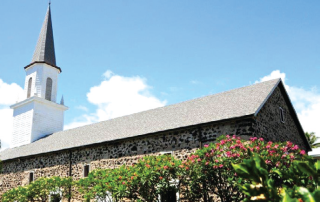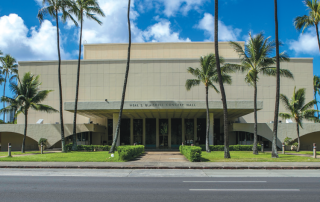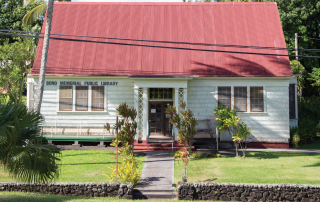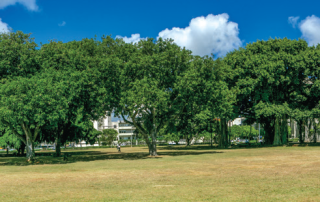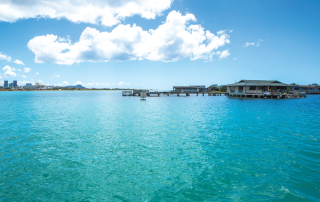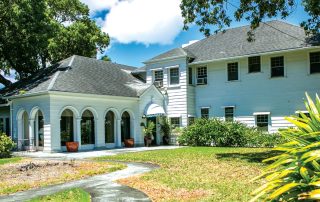Mokuaikaua Church (2014)
Photography: Courtesy of David Croxford Article Written By: Loren Moreno, HONOLULU Magazine What is it? A landmark in the Kailua Village in Kona, Moku‘aikaua Church enjoys the unique distinction of being Hawai‘i’s first church. Its 195-year history began when Boston missionaries arrived on the Big Island after the death of King Kamehameha I. The current building sits on land once belonging to Prince Liholiho. In fact, Liholiho donated his home in 1820 to be the first church building. It was later rebuilt in 1837. Recently named one of America’s 11 Most Endangered Historic Places by the National Trust for Historic Preservation, Moku‘aikaua represents the “new” western architecture of early 19th-century Hawai‘i and is a symbol of Hawai‘i’s missionary past. Its roof and iconic steeple were built with ‘ōhi‘a wood that had been cured in the ocean. Its walls are constructed of lava rock and mortared coral. What threatens it? While far from crumbling, Moku‘aikaua is in need of major repair and restoration, says senior pastor David de Carvalho. The church suffered earthquake damage in 2006, including large cracks in the south corner walls, which threaten its structural integrity. Salt air has also caused deterioration in the building’s aging wiring and electrical system. Moku‘aikaua’s steeple, the highest structure in this sleepy community, is perhaps its greatest problem, suffering from termite damage and severe rotting. What can be done? Civil engineers are helping the church develop a plan to reinforce the building’s walls, replace its rotting beams and rebuild its steeple. Work would be done in three phases, but Moku‘aikaua will need some $3 million to do it.


